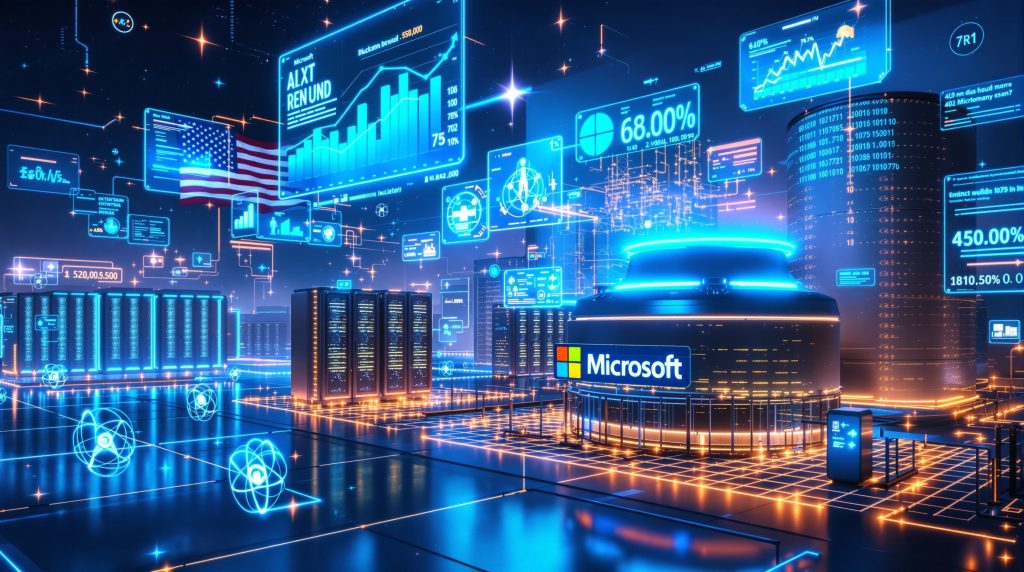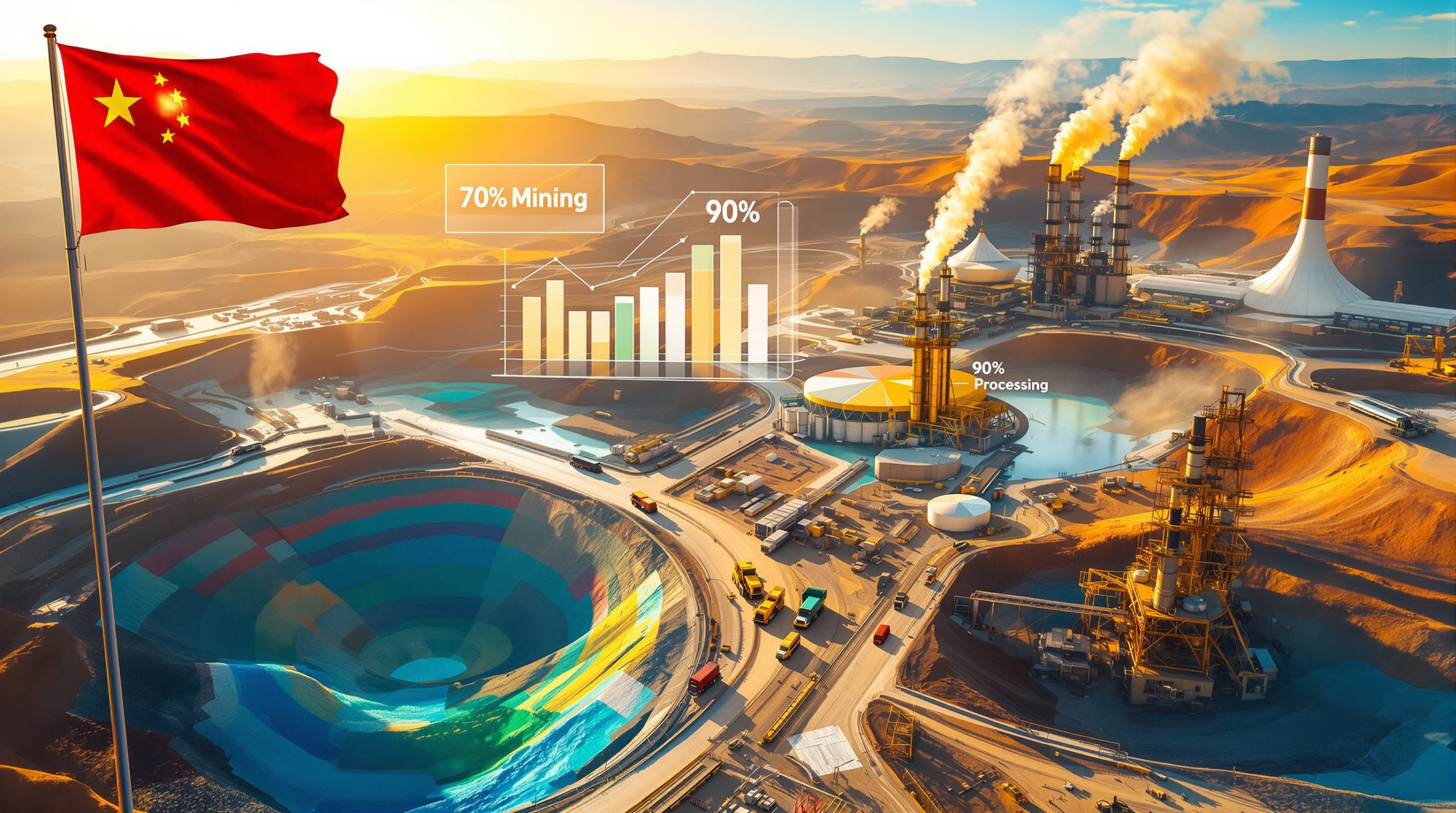How Is Microsoft Transforming Its Energy Strategy with Nuclear Power?
Microsoft is making significant moves in the nuclear energy sector as part of its strategy to secure reliable, carbon-free electricity for its expanding data center and AI operations. This strategic pivot represents a major shift in how tech giants approach their energy needs in an increasingly AI-driven world.
According to energy industry analysts, Microsoft's entrance into the nuclear sector signals what one market expert described as "a momentous paradigm shift for nuclear energy as a whole," highlighting how tech companies are now becoming active participants in an industry traditionally dominated by utilities and specialized energy providers.
The Growing Energy Demands of AI Infrastructure
AI data centers require 2-3 times more electricity than traditional data centers, creating unprecedented energy challenges for companies operating large language models and other compute-intensive AI systems.
Microsoft's global data center footprint is projected to grow by 50% in the next three years, with AI workloads driving much of this expansion and corresponding energy demand.
The company has publicly committed to achieving 100% carbon-free energy by 2030, making nuclear power an attractive option to meet both sustainability and reliability requirements.
Energy security has evolved from a sustainability consideration to a critical business continuity requirement, as AI operations cannot tolerate intermittent power availability.
Why Is Microsoft Betting on Nuclear Energy?
The Perfect Match for AI Power Requirements
Baseload Reliability: Nuclear power plants operate at capacity factors exceeding 90%, providing consistent 24/7 power generation regardless of weather conditions—a critical requirement for AI infrastructure that cannot tolerate downtime.
High Energy Density: Nuclear facilities produce massive amounts of electricity from relatively small physical footprints, generating approximately 1 gigawatt of power from less than one square mile of land—10 times more space-efficient than solar farms.
Long-Term Price Stability: Nuclear plants typically operate for 60-80 years with license extensions, offering predictable energy costs over decades-long timeframes—insulating Microsoft from uranium market volatility.
Carbon-Free Generation: Nuclear energy produces virtually zero carbon emissions during operation, helping Microsoft meet its sustainability commitments while addressing its growing power demands.
Competitive Advantages in the AI Race
Securing dedicated power sources gives Microsoft a strategic advantage over competitors facing energy constraints in key markets. As grid capacity becomes increasingly limited in tech hubs, companies with guaranteed power access gain significant expansion capabilities.
Energy availability is emerging as a strategic bottleneck in the AI race, potentially as limiting as semiconductor supply. Companies that solve their energy challenges gain freedom to scale computing resources without infrastructure limitations.
Predictable power costs provide long-term financial advantages in AI infrastructure planning, allowing Microsoft to forecast operational expenses with greater certainty than competitors relying on volatile energy markets.
What Major Nuclear Initiatives Has Microsoft Launched?
Three Mile Island Resurrection
Historic Agreement: Microsoft recently entered a 20-year power purchase agreement with Constellation Energy to restart and secure output from the dormant Three Mile Island nuclear facility in Pennsylvania.
Reactor Details: The agreement involves reactivating the 835 MW Unit 1 reactor, which has been shut down since 2019 but remains in good operational condition with an existing license valid until 2034.
Financial Impact: While specific terms remain undisclosed, industry analysts estimate the agreement represents a $1.6+ billion commitment over the contract lifetime, based on current nuclear electricity pricing.
Grid Benefits: The restarted reactor will provide carbon-free electricity to the PJM interconnection grid serving 13 states and the District of Columbia, including regions with major Microsoft data center operations.
Timeline: Engineering assessments and regulatory approvals are underway, with the facility expected to restart operations by 2028, pending Nuclear Regulatory Commission review.
World Nuclear Association Membership
Microsoft joined the World Nuclear Association as a first-of-its-kind tech industry member in 2023, marking a notable departure from traditional membership composed primarily of utilities and nuclear operators.
The company is actively participating in policy development and industry standardization efforts, bringing a tech industry perspective to nuclear regulation and deployment models.
Microsoft is collaborating with nuclear industry stakeholders on accelerating deployment timelines for new nuclear technologies, recognizing that conventional development schedules may be too slow for rapidly expanding AI power needs.
Nuclear industry participants have welcomed Microsoft's involvement, with one industry expert noting that "when you have companies like that come in with their capacity and resources, it's very exciting," particularly for an industry that has historically moved at a deliberate pace.
How Is Microsoft Investing in Next-Generation Nuclear Technologies?
Small Modular Reactors (SMRs)
Deployment Potential: Microsoft is exploring Small Modular Reactors as dedicated power sources for data center campuses, particularly in regions with limited grid capacity or renewable resources.
Regulatory Engagement: The company is working with nuclear regulatory authorities to streamline approval processes for SMRs designed specifically for industrial rather than grid-scale applications.
Scalability Advantages: SMRs can be deployed incrementally (typically 50-300 MW modules) to match growing power needs, aligning with Microsoft's phased data center expansion approach.
Distributed Architecture: The smaller footprint and reduced safety zones of advanced SMRs allow for strategic placement closer to data center facilities, minimizing transmission infrastructure and losses.
Fusion Energy Partnerships
Helion Energy Investment: Microsoft has established a multi-year agreement to purchase electricity from Helion Energy's fusion power demonstration plant once operational, representing the first commercial power purchase agreement for fusion energy.
Construction Progress: Helion's Orion fusion facility is currently under development in Everett, Washington, with Microsoft's financial backing accelerating the timeline for commercial demonstration.
Power Delivery Target: The agreement anticipates first electricity delivery between 2028-2029, potentially making Microsoft the first company to power commercial operations with fusion energy.
Technology Validation: Microsoft's commercial commitment provides crucial market validation for fusion technology, helping the emerging sector attract additional investment and development resources.
What Role Does AI Play in Microsoft's Nuclear Strategy?
AI-Powered Nuclear Innovation
Digital Twin Technology: Microsoft is leveraging Azure AI to create virtual replicas of nuclear facilities, enabling advanced simulation, optimization, and predictive maintenance without disrupting operations.
Regulatory Streamlining: AI analysis of safety documentation is helping accelerate licensing processes by identifying precedents, standardizing submissions, and automating compliance verification.
Operational Efficiency: Machine learning algorithms are improving plant performance and maintenance schedules, analyzing operational data to maximize uptime and power output.
Simulation Capabilities: Azure's advanced modeling capabilities are supporting next-generation reactor designs, allowing for thousands of operational scenarios to be tested virtually before physical construction.
Collaborative Research Initiatives
Microsoft has established partnerships with nuclear research institutions like Idaho National Laboratory on AI-enhanced safety systems, improving monitoring and anomaly detection.
Joint research programs with universities are exploring AI applications for reactor operations, fuel cycle optimization, and nuclear waste disposal safety.
The company is developing specialized AI tools for nuclear supply chain optimization, addressing bottlenecks in material sourcing and component manufacturing.
Digital platforms for nuclear workforce training are using Azure AI to create immersive learning environments, helping address the industry's aging workforce challenges.
How Does Microsoft's Nuclear Strategy Compare to Other Tech Giants?
Industry-Wide Energy Transformation
Amazon: While less public about specific nuclear initiatives, Amazon has joined Google and Microsoft in nuclear energy investment to power data centers, particularly in regions where renewable options are limited.
Google: The company has focused primarily on grid-scale storage alongside renewables, though its 24/7 carbon-free energy commitment may eventually require nuclear components.
Meta: Facebook's parent company maintains a primarily renewable-focused approach with investments in long-duration storage, but has not yet announced significant nuclear initiatives.
Microsoft's Differentiation: Microsoft has emerged as the most aggressive tech company in direct nuclear power generation investment, taking concrete steps beyond exploratory research.
Competitive Positioning
Microsoft's early-mover advantage in securing nuclear capacity creates a potential barrier to entry for competitors, as available nuclear assets and development opportunities become more limited.
Long-term energy contracts provide Microsoft with cost certainty that competitors may struggle to match, particularly as energy markets face increasing volatility.
The company is building specialized expertise in nuclear energy procurement and integration, creating an in-house capability that will be difficult for competitors to replicate quickly.
Strategic partnerships with key nuclear industry stakeholders give Microsoft preferential access to new technologies and development opportunities as they emerge.
What Challenges Does Microsoft Face in Its Nuclear Strategy?
Regulatory and Timeline Hurdles
Licensing Complexity: Nuclear projects face extensive regulatory review processes, with approval timelines often extending 3-5 years even for existing facility restarts.
Construction Timelines: New nuclear facilities typically take 5-10 years to complete, creating a gap between Microsoft's immediate energy needs and when nuclear solutions can deliver.
Public Perception: Managing stakeholder concerns about nuclear energy remains challenging, requiring robust community engagement and education programs.
Policy Uncertainty: Microsoft must navigate changing energy regulations across global markets, with some regions embracing nuclear power while others consider a uranium mining halt in Namibia and similar actions.
Technical and Operational Considerations
Grid Integration: Ensuring seamless connection between nuclear sources and data centers requires sophisticated power distribution infrastructure and redundancy systems.
Backup Systems: Microsoft must develop comprehensive redundancy plans for scheduled maintenance periods when nuclear facilities may be offline.
Workforce Development: Building specialized teams to manage nuclear energy partnerships requires attracting talent from an industry with an aging workforce and limited pool of experts.
Security Requirements: Nuclear facilities bring additional cybersecurity concerns as critical infrastructure, requiring enhanced protection against digital and physical threats.
How Will Microsoft's Nuclear Strategy Impact the Broader Energy Landscape?
Market Transformation Effects
Industry Revitalization: Tech investments are bringing new capital and innovation to the nuclear sector after decades of limited development in many markets.
Supply Chain Development: Microsoft's commitments are creating demand for advanced nuclear components and services, potentially revitalizing manufacturing capabilities.
Financing Innovation: New business models are emerging for nuclear project development, with tech companies' long-term power purchase agreements making projects more bankable.
Policy Influence: Tech sector advocacy is potentially reshaping nuclear regulations, with Microsoft's influence helping streamline approval processes for new technologies.
Environmental and Climate Implications
Emissions Reduction: Each 1GW nuclear plant prevents approximately 7 million tons of CO₂ annually compared to natural gas alternatives, significantly advancing climate goals.
Land Use Efficiency: Nuclear's small physical footprint compared to renewable alternatives preserves natural habitats and reduces environmental disruption.
Resource Conservation: Nuclear power reduces dependency on critical minerals required for battery storage, helping address supply chain vulnerabilities in the clean energy transition.
Long-Term Sustainability: With operating lifespans of 60-80 years, nuclear plants provide multi-generational clean energy infrastructure that outlasts most alternatives.
What Does Microsoft's Nuclear Strategy Mean for the Future of Computing?
Enabling the Next Wave of AI Innovation
Computational Headroom: Securing stable, abundant energy supplies creates the foundation for increasingly complex AI models that might otherwise be constrained by power limitations.
Infrastructure Resilience: Nuclear power provides stability for mission-critical applications that cannot tolerate the intermittency associated with weather-dependent renewables.
Geographic Flexibility: Reliable power sources enable data center expansion in previously power-constrained regions, creating new options for global infrastructure distribution.
Processing Capacity Growth: Energy security allows Microsoft to plan for larger training runs and inference capabilities without facing hard power constraints.
Long-Term Strategic Positioning
Vertical Integration: By moving up the value chain to control critical infrastructure, Microsoft is reducing dependencies on third-party providers for essential resources.
Competitive Moats: Energy security creates sustainable advantages that are difficult for competitors to overcome, particularly as grid capacity becomes constrained in key markets.
Future-Proofing: Microsoft's nuclear strategy prepares for exponentially increasing computational energy demands, particularly as AI models continue to grow in size and complexity.
Industry Leadership: The company is setting new standards for responsible AI infrastructure development that balance performance needs with sustainability requirements.
How Can Businesses and Investors Respond to Microsoft's Nuclear Strategy?
Strategic Considerations for Stakeholders
Energy-Intensive Industries: Companies with high power requirements should consider following Microsoft's lead in securing dedicated power sources, particularly as grid constraints increase.
Technology Providers: Opportunities are emerging for solutions addressing nuclear-powered data center integration, creating new market segments for energy management systems.
Investors: Microsoft's moves suggest a reassessment of uranium investment strategies may be warranted, particularly for next-generation technologies with tech sector backing.
Policy Makers: Frameworks supporting responsible nuclear development can help regions attract technology investment, creating economic development opportunities around energy hubs.
Emerging Opportunities
Supply Chain Participation: Growing demand for specialized nuclear components and services is creating business opportunities throughout the nuclear supply ecosystem.
Workforce Development: The convergence of nuclear and technology sectors is increasing need for talent with expertise in both domains, creating educational and training opportunities.
Innovation Partnerships: Collaboration potential between tech and nuclear sectors is expanding, particularly for advanced monitoring, safety systems, and operational optimization.
Financing Models: New approaches to funding nuclear projects with tech industry backing are emerging, potentially creating investment vehicles that blend infrastructure and technology returns.
What's Next for Microsoft's Nuclear Energy Strategy?
Near-Term Developments to Watch
Additional Power Purchase Agreements: Microsoft is likely to expand its nuclear procurement globally, particularly in regions with supportive regulatory environments.
Regulatory Engagement: The company will likely increase advocacy for streamlined nuclear project approvals, working with policymakers to accelerate deployment timelines.
Technology Investments: Further funding for advanced reactor designs beyond current commitments may emerge as Microsoft expands its energy portfolio.
International Expansion: Microsoft will need to adapt its nuclear strategies for its global data center footprint, navigating varying regional approaches to nuclear energy and US uranium market disruption caused by policy changes.
Long-Term Vision
Energy Self-Sufficiency: Microsoft may eventually move toward owned and operated power generation facilities, reducing reliance on third-party providers for critical infrastructure.
Grid Integration: The company could become an active participant in electricity markets, potentially selling excess capacity back to grids during periods of lower internal demand.
Technology Transfer: AI innovations developed for Microsoft's operations may be commercialized to improve nuclear plant operations industry-wide.
Industry Transformation: Microsoft's approach may reshape how tech companies procure energy, creating new models for infrastructure development and resource management.
FAQ: Microsoft and Nuclear Energy
Is Microsoft actually building nuclear power plants?
Microsoft is not directly building nuclear power plants. Instead, the company is entering into long-term power purchase agreements with established nuclear operators like Constellation Energy and investing in next-generation nuclear technology companies like Helion Energy. These partnerships allow Microsoft to secure dedicated carbon-free electricity without becoming a nuclear plant operator itself.
How does Microsoft's nuclear strategy support its climate goals?
Nuclear energy produces virtually zero carbon emissions during operation, making it aligned with Microsoft's commitment to be carbon-negative by 2030. By securing nuclear power, Microsoft can meet its growing electricity demands while avoiding the emissions that would come from fossil fuel alternatives, particularly for the baseload power needs that cannot be easily met with intermittent renewable sources alone.
Will Microsoft's nuclear investments increase electricity costs for its services?
While nuclear projects require significant upfront capital, they provide stable, predictable electricity costs over decades-long operational lifespans. Microsoft's long-term power purchase agreements are likely structured to provide price certainty, potentially shielding the company from energy market volatility and allowing for more predictable operational costs for its cloud and AI services.
How does Microsoft's approach compare to using renewable energy like solar and wind?
Microsoft continues to invest heavily in renewable energy, but recognizes that a diverse energy portfolio is necessary. Nuclear power complements renewables by providing consistent baseload generation regardless of weather conditions or time of day. This is particularly important for AI data centers that require constant, reliable power at massive scale – a challenge that is difficult to meet with intermittent renewable sources alone.
What risks does Microsoft face with its nuclear energy strategy?
Key risks include potential delays in nuclear project development, regulatory changes affecting nuclear energy, public perception challenges, and the need to integrate nuclear generation with data center operations. Microsoft is mitigating these risks through diversified energy investments, partnerships with established nuclear operators, and active engagement in policy development.
Further Exploration
Readers interested in learning more about the intersection of technology and energy can explore related educational content, such as the World Nuclear Association's resources on nuclear energy applications and Microsoft's official sustainability reports that detail their energy procurement strategies.
AI enthusiasts may also find value in reviewing this analysis of big tech's AI-driven nuclear interest, which provides context for why technology companies are increasingly focused on securing reliable, carbon-free electricity sources.
Technology industry analysts regularly publish reports on data center energy trends that offer additional perspectives on how major cloud providers are addressing their growing power needs.
Want to Spot the Next Major Mineral Discovery Before the Market?
Discover how investors can gain immediate alerts on significant ASX mineral discoveries with Discovery Alert's proprietary Discovery IQ model, transforming complex data into actionable investment opportunities. Visit our dedicated discoveries page to understand why major mineral discoveries can lead to substantial market returns.




